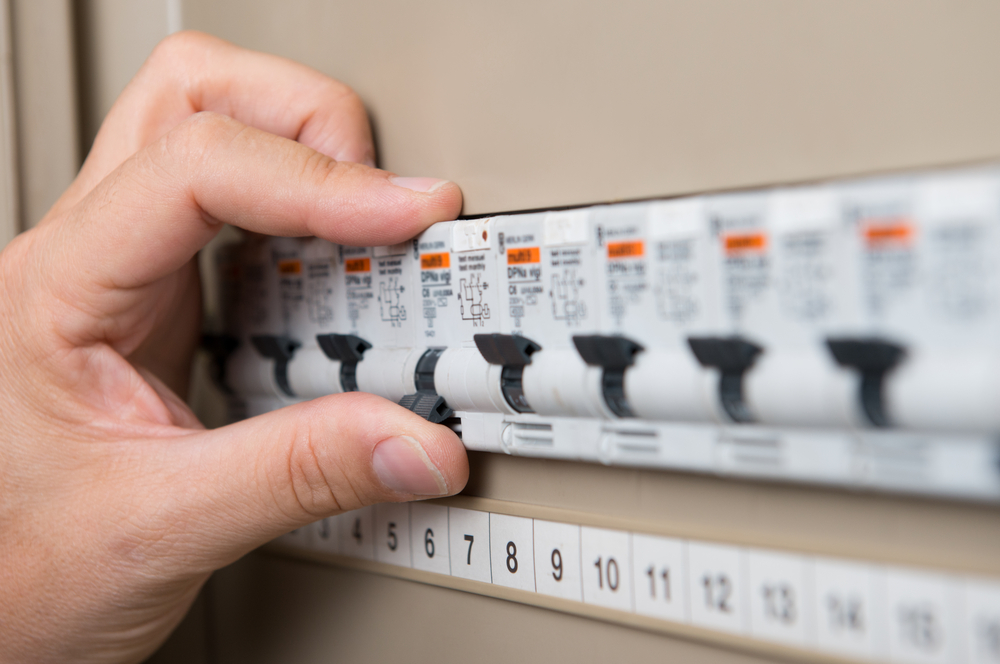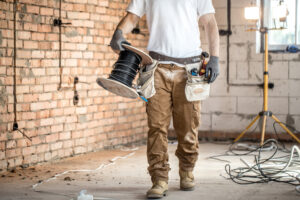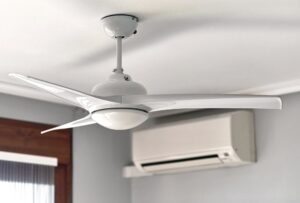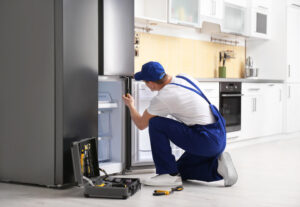Dealing with a tripped safety switch and looking to reset it quickly?
A safety switch, vital for your home’s electrical safety, can sometimes trip, leaving you in the dark. But don’t worry, this guide will help you understand how to reset a safety switch with clear, step-by-step instructions—ensuring you can confidently and safely restore power.
Key Takeaways
- A safety switch (RCD) is essential for preventing electric shocks by monitoring electrical flow and cutting off power if an imbalance is detected; they should be installed on all circuits in a building for comprehensive protection.
- Before resetting a safety switch, ensure all electrical devices connected to the circuit are turned off, wear rubber gloves for protection, and consult a licensed electrician if there’s noticeable damage to electrical appliances or wiring.
- Regular testing of safety switches every three months is vital for maintaining their functionality, with troubleshooting steps including unplugging appliances and resetting switches; persistent issues may require professional assistance from a licensed electrician.
Understanding the Function of a Safety Switch
A safety switch, also known as a residual current device (RCD), acts as a key protector in maintaining electrical safety. The device vigilantly monitors the flow of electricity through circuits. If it detects an imbalance, it swiftly switches off the power. Its prime objective? To prevent electric shocks, saving lives, and minimising the risk of serious injury by instantly cutting the power in the event of a fault.
There are different types of safety switches available, each serving specific purposes for electrical usage and appliances. These switches are specifically designed to meet a range of needs and uphold safety across various scenarios. These include switchboard safety switches, power point safety switches, and portable safety switches.
To ensure comprehensive protection against electric shocks, safety switches should be installed on all circuits in a home or building, including those for light, power, hot water, air conditioning, and even the oven.
Locating Your Safety Switch
Identifying the location of your safety switch is fundamental in understanding its operation and handling it appropriately. One might wonder, “does a safety switch always have a specific location?” Typically, safety switches are found in the electricity box on the switchboard, generally near the power meter, or in a designated cabinet or cupboard within the home.
But how can you distinguish a safety switch from other devices in the electrical box? Look out for labels placed by electricians or switches with a ‘T’ or ‘test’ button, which are unique to safety switches. If your safety switch has tripped, you’ll notice that it is in the off position on the switchboard within the electrical meter box. Test buttons on safety switches may be:
- blue
- white
- black
- orange
They can also vary in shape and size, helping in the visual identification of the safety switch.
Immediate Steps Before Resetting Your Safety Switch
Prior to resetting your safety switch, certain preliminary steps are necessary. It’s important to follow these steps carefully to ensure safety. First, it’s vital to switch off or unplug all electrical appliances and devices connected to the affected circuit. This step helps to prevent immediate re-tripping due to a potentially faulty appliance.
Remember, safety should always be your top priority. Here are some important steps to follow when resetting a safety switch:
- Ensure that the area around the switchboard or electrical panel is dry.
- Wear rubber gloves during the reset process to protect yourself from electrical shock.
- Inform all household occupants about resetting the safety switch to prevent any unexpected power outages that might interrupt their activities.
By following these steps, you can safely reset the safety switch and restore power to your home.
If any appliances show signs of wear or damage, unplug them before resetting the safety switch. If there’s noticeable damage to electrical appliances or wiring, it’s time to consult a licensed electrician.
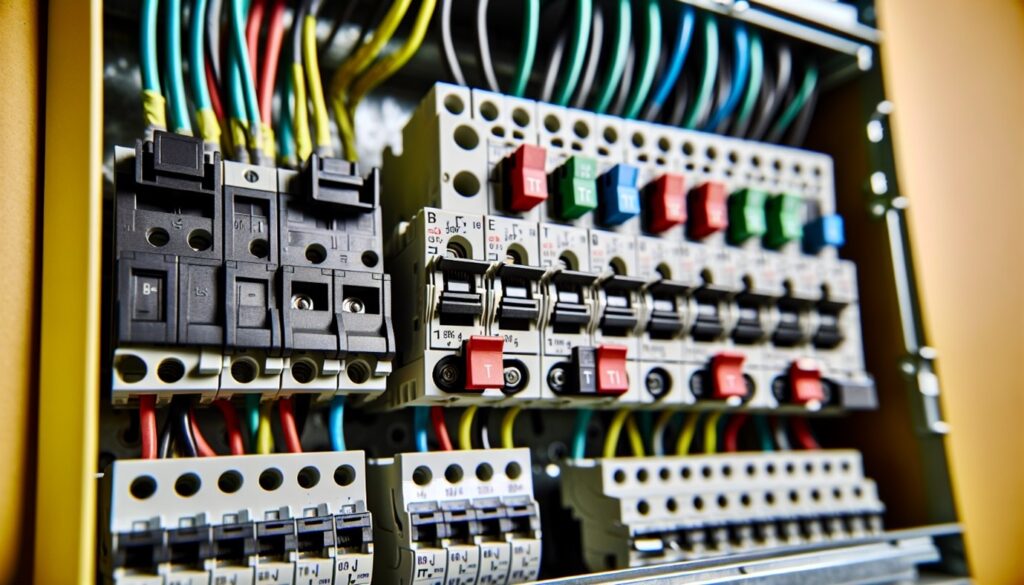
The Correct Way to Reset Your Safety Switch
Understanding the process of resetting a safety switch is paramount in restoring power and maintaining ongoing electrical safety. This involves a few key steps: verifying the off position of the switch, resetting the switch, and then bringing your appliances back online.
We shall now explore each of these steps.
Verify the Off Position
Prior to initiating the reset process, you must confirm that the safety switch is indeed turned off. But how can you tell? A safety switch in the ‘off’ position will typically be flipped down or appear in a different orientation compared to switches that are in the ‘on’ position.
To confirm the off position, locate the safety switch on the switchboard and check its orientation. A tripped switch may sit between the on and off positions or show a visible red indicator to signal it is not active.
Reset the Safety Switch
Having confirmed the off position, you can now proceed to resetting the safety switch. But before you flip the switch, there’s a test you should perform. To test the safety switch, press either the ‘T’ button or the ‘Test’ button. This will ensure that the switch is functioning properly. If the safety switch trips and cuts power to the connected circuits, this means that the safety switch is functional and providing protection.
After a successful test, resetting the safety switch involves flipping it back to the on position, which may require pushing it back upwards or twisting it, depending on the switch type.
Turn Appliances Back On
With the safety switch reset, the next step is to reconnect your appliances. But remember, it’s important to do this one at a time, and not all at once. Unplug all appliances before beginning to reconnect them one by one, ensuring a more controlled and safer process.
Start reconnecting all the appliances in the following order:
- Plug in a noise-making device first, such as a radio. This way, you can easily identify a potential fault if the safety switch trips.
- Plug in smaller or less essential appliances.
- Once smaller appliances have been successfully reconnected without tripping the safety switch, wait a few minutes.
- Turn on larger appliances like fridges and air conditioners to prevent immediate load-related tripping.
Identifying Issues Post-Reset
Occasionally, you may face issues even after successfully resetting your safety switch. To identify potential problems after a safety switch trips post-reset, systematically unplug electrical appliances and attempt to reset the switch. This process will help you determine if a specific appliance is causing the issue.
If the problem persists even after unplugging all appliances, the issue may lie within the house’s wiring or electrical infrastructure. In such cases, it’s time to call in the professionals. Consult with a licensed electrician if the safety switch trips repeatedly without a clear cause, or when all troubleshooting steps have been exhausted without resolving the issue.
When to Contact a Licensed Electrician
In certain situations, a DIY approach might fall short and necessitate reaching out to a licensed electrician. If the safety switch trips repeatedly during normal household electricity use or does not reset after unplugging all appliances, it’s time to get professional help.
Continuous nuisance tripping or the inability to reset the safety switch indicates a complex electrical fault that warrants the attention of an electrician. An electrician can inspect and potentially repair underlying electrical infrastructure issues, which are not apparent to untrained individuals.
Promptly addressing electrical faults within an electrical circuit with the aid of a professional is crucial for maintaining a safe and secure home environment, especially when dealing with a faulty home electrical appliance, preventing potential electric shock hazards.
Maintaining Your Safety Switch
Similar to other appliances in your home, your safety switch necessitates regular maintenance to guarantee its effective operation and continued protection. Regular testing of safety switches is as important as having them installed.
Safety switches need to be tested every three months to ensure they are functioning correctly, and reminders can be set based on the arrival of quarterly electricity bills. Testing a safety switch involves pressing the ‘Test’ or ‘T’ button on the device, which should result in the switch tripping to the off position and cutting power. A safety switch that does not trip power immediately is considered faulty and needs to be urgently replaced by a licensed electrician.
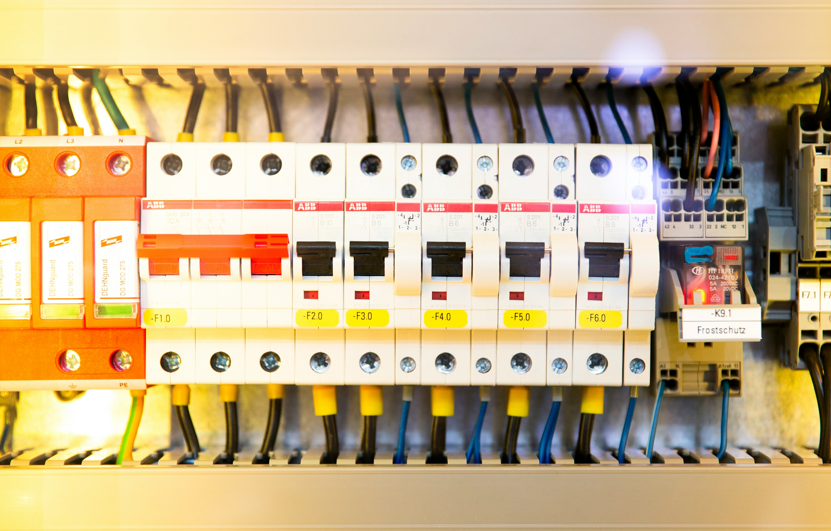
Preventative Measures to Avoid Future Trips
To avoid the inconvenience of resetting your safety switch and to bolster safety, you can adopt several preventive measures. Avoid plugging too many appliances into one power point to prevent overloading and tripping of safety switches. Unplugging appliances when not in use can reduce unnecessary electrical draw and prevent unwarranted safety switch activation.
In addition, here are some tips to improve electrical safety:
- Use surge protectors during heavy rainfall or electrical storms to mitigate risks that can lead to safety switch trips.
- Replace outdated appliances with newer, energy-efficient models to decrease the overall load on power points and improve safety.
- Consider organising regular electrical safety inspections to verify load levels and get proper recommendations for a safe and efficient electrical setup. Your local electrician can do that – and in Sydney, that’s us!
Understanding Circuit Breakers vs. Safety Switches
Despite their apparent similarities, circuit breakers and safety switches perform distinct functions. Circuit breakers, often referred to as fuses, protect wiring and electrical systems from high current faults, short circuits, or overloads by cutting the power when such issues are detected. On the other hand, safety switches are designed to cut off electricity the moment a leakage is detected, protecting individuals from electric shocks.
Therefore, the distinction between safety switches and circuit breakers lies in their functions: safety switches protect people by detecting electrical leakages, while circuit breakers safeguard electrical circuits from overload, thus preventing fires.
Combination devices that act as both circuit breakers and safety switches are available, providing a space-saving solution on the switchboard and minimizing disruptions to other circuits upon tripping.
Summary
As we’ve seen throughout this guide, understanding and handling safety switches is a vital skill for maintaining a safe and secure home environment. Safety switches play a crucial role in protecting us from potential electrical shock hazards, and knowing how to operate them correctly is just as important as having them installed.
Remember, if your safety switch trips repeatedly or doesn’t reset after unplugging all appliances, it’s time to call a licensed electrician. Regular testing and maintenance of your safety switch, along with taking preventative measures such as not overloading power points, can help prevent future trips. And most importantly, always prioritise your safety when dealing with any electrical components.
Frequently Asked Questions
Why can’t I turn my safety switch back on?
It is important to identify and address the underlying electrical issue, such as a faulty appliance or wiring, as the safety switch won’t turn back on until the problem is resolved.
How do I reset my trip switch Australia?
To reset your trip switch in Australia, locate the safety switches in your electrical meter box or switchboard, find the one that has tripped (in the off position), and flip it back on. Then, check if the appliances on that circuit work.
Who can reset a circuit breaker Australia?
You should call an electrician to reset a circuit breaker in Australia if the cause of the trip is not identifiable as an overload. Using a professional for this task ensures safety and proper handling of the electrical system.
How does a safety switch function?
A safety switch functions by monitoring electricity flow and switching off power if it detects an imbalance, which protects against electric shocks.
How can I locate my safety switch?
To locate your safety switch, check your electricity box on the switchboard, near the power meter, or in a designated cabinet or cupboard within your home for switches with a ‘T’ or ‘test’ button.


